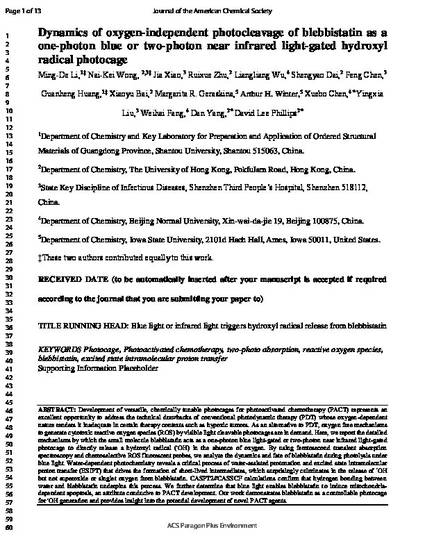
Development of versatile, chemically tunable photocages for photoactivated chemotherapy (PACT) represents an excellent opportunity to address the technical drawbacks of conventional photodynamic therapy (PDT) whose oxygen-dependent nature renders it inadequate in certain therapy contexts such as hypoxic tumors. As an alternative to PDT, oxygen free mechanisms to generate cytotoxic reactive oxygen species (ROS) by visible light cleavable photocages are in demand. Here, we report the detailed mechanisms by which the small molecule blebbistatin acts as a one-photon blue light-gated or two-photon near-infrared light-gated photocage to directly release a hydroxyl radical (•OH) in the absence of oxygen. By using femtosecond transient absorption spectroscopy and chemoselective ROS fluorescent probes, we analyze the dynamics and fate of blebbistatin during photolysis under blue light. Water-dependent photochemistry reveals a critical process of water-assisted protonation and excited state intramolecular proton transfer (ESIPT) that drives the formation of short-lived intermediates, which surprisingly culminates in the release of •OH but not superoxide or singlet oxygen from blebbistatin. CASPT2//CASSCF calculations confirm that hydrogen bonding between water and blebbistatin underpins this process. We further determine that blue light enables blebbistatin to induce mitochondria-dependent apoptosis, an attribute conducive to PACT development. Our work demonstrates blebbistatin as a controllable photocage for •OH generation and provides insight into the potential development of novel PACT agents.
Available at: http://works.bepress.com/arthur_winter/35/

This document is the unedited Author’s version of a Submitted Work that was subsequently accepted for publication in the Journal of the American Chemical Society, copyright © American Chemical Society after peer review. To access the final edited and published work see DOI: 10.1021/jacs.8b10235. Posted with permission.